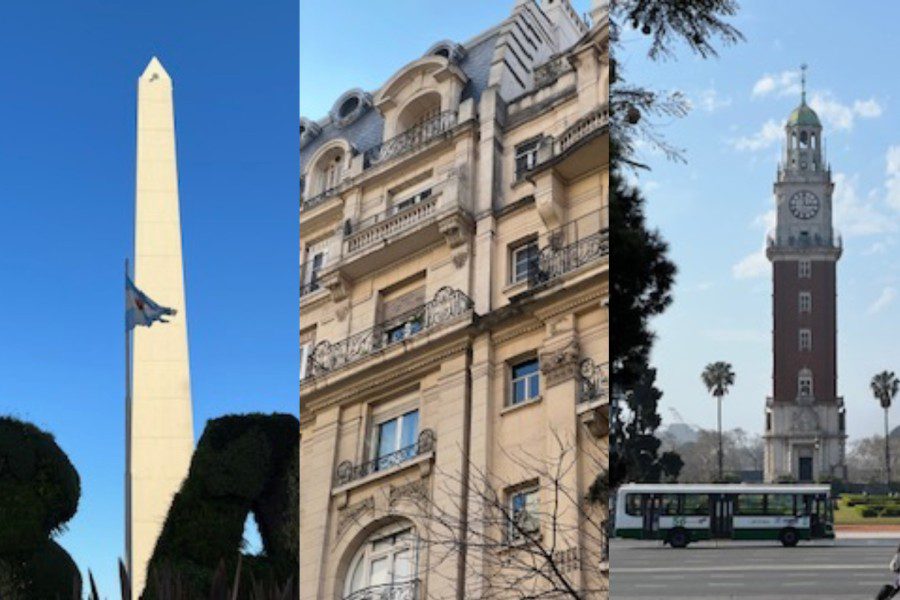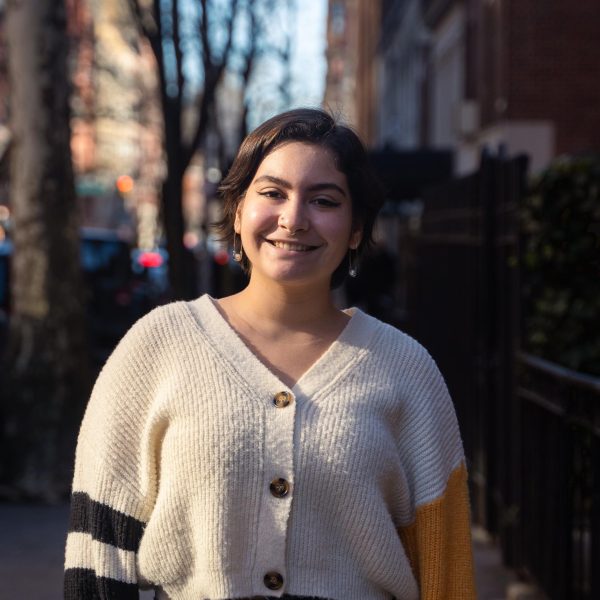What NYU doesn’t tell you: Buenos Aires
If you’re studying abroad at NYU Buenos Aires, here are the most important tips for adapting to the city that you won’t learn on campus.
Here are some tips and tricks to get around Buenos Aires. (Juliana Guarracino for WSN)
December 2, 2022
“What NYU doesn’t tell you” is a series started by the Abroad desk meant to share advice on the ins and outs of the cities where NYU students study abroad.
BUENOS AIRES, Argentina — During my semester at NYU Buenos Aires, NYU staff made it easier than expected to adapt to the city by giving us transport cards, sharing cafe recommendations and organizing tours. But when it actually came time to do it all on my own, there were definitely some parts of city life that took time to learn — be it the public transportation system or currency exchange. Eventually, I learned what worked or what didn’t and now I’m here to share everything I learned. When you’re abroad in Buenos Aires, you can skip the trial and error and get straight to the fun.
Navigating public transportation
First of all, download Google Maps. Apple Maps on iPhones doesn’t work in Buenos Aires for public transit, but Google Maps has all the stops — and tells you exactly where to go and how long the trip will take. It will be your best friend for navigating the city.
This semester, Center for Student Life staff provided us with the Buenos Aires equivalent of a MetroCard — a SUBE card. These can be used for both the bus (the Colectivos de Buenos Aires) and the subway (the Subte de Buenos Aires). Understandably, we were not given the rundown on how to actually use the bus or metro. A couple missed buses later, here I am to give you a crash course.
Colectivo
1. When you are at the bus stop, you have to flag it down to make it stop — so watch out for when yours is arriving. If you don’t raise your hand to call the bus over, there is a good chance that they’ll fly past the stop and leave you stranded.
2. Before boarding, you should know the cross streets of the stop that you need to get off at. Why? Because, you’re charged by distance, not at a flat rate. That means that once you board the bus, you have to place your SUBE card on the scanning machine and tell the driver what stop you are getting off at.
3. The stops are not indicated on signs within the bus — nor are they announced — so you need to pay attention to where you are and know when to get off.
4. When exiting the bus, you need to click one of the little buttons located around the bus to indicate that your stop is next. If you don’t, the driver will not stop and won’t open the back doors to let you off.
Subte
1. There’s not really an uptown or a downtown, just the end stops — know which way you are going beforehand, so that you go in on the right side and take the Subte in the right direction.
2. To enter the station, place your card on the reader until the screen says “pase” and then go through the turnstile. Trust me — this will save you some bruises.
3. Unlike the buses, stops are often listed on signs in the trains and the next stop is often announced. But, it is still worth paying attention, as stops can be quite far apart.
Both buses and trains come very frequently during the day, so if you happen to miss one of your first few attempts, it’s no worry. But if you’re in a rush, take a taxi — they’re everywhere. Just flag one down, give the driver the cross streets of your destination and you’re set. Just be mindful that they only take cash. If you’d rather use a card, use Cabify, the more accessible Argentinian rideshare.
Getting and saving money
For the most part, you can use debit or credit cards everywhere, aside from taxis. But using cash can actually save you some money. With the currency exchange here, there are essentially two rates: the official exchange rate that the bank gives you and that stores use to charge you, and the Blue Dollar rate that often gets you more pesos per dollar. If you exchange money with the Blue Dollar rate, you get more cash than you would at the bank and pay less than you would with a card. In sum, it’s a big win for your wallet.
Exchange locations like Western Union are also super helpful for this, as they usually use the Blue Dollar rate. With Western Union specifically, you can use the company’s app to send yourself money and pick it up — already exchanged into pesos. But, I will warn you, the Western Union lines are atrocious. Try to take a lot out at once. You’ll need it.
It is worth getting used to the currency difference between Argentina and the United States. Your U.S. dollar goes farther in Argentina than you’d likely expect. Just to give you an idea, the current Blue Dollar rate at Western Union is 324.70 Argentine pesos for one U.S. dollar. That will cover more than one week’s worth of bus rides to and from school for many students here.
Interacting with locals
Within the first few days of arriving on campus, Center for Student Life staff warned us that people in Buenos Aires can get a bit personal. However, I’m not sure any of us were prepared for what that sometimes means. While this is certainly a generalization, it is useful to know ahead of time as a student who finds themself interacting with locals every day.
Don’t be surprised if someone randomly starts a conversation with you at a bus stop. Or, if you accidentally mess up a word in Spanish or have a different accent, it’s likely that you’ll be immediately pulled into a conversation about where you are from and what you are doing here. Often these conversations are wholesome opportunities to practice your Spanish and talk with a local, but you may be a bit shocked by how frank people can be here.
Whether it is how openly people talk about their political opinions or how curious they are about other cultures, it can sometimes come off as rude. While this curiosity is often well-intentioned, it can quickly become an invasion of space and privacy — one that can take a mental toll on a student by the end of the semester. For many students of color studying abroad in Buenos Aires, this aspect of the city can be quite a culture shock and may be worth noting before studying here.
Staying safe
In my experience, Argentina is one of the safest cities I’ve ever visited. But this doesn’t mean you should let your guard down. Like any city, know which neighborhoods are not the safest and stay aware of your surroundings and belongings — especially in crowds or festivals.
While going out late at night and taking public transit is rather safe, petty theft is common in the city, particularly when it comes to iPhones. An iPhone in Argentina can buy a family a month’s worth of food in terms of value. The incentive to steal an iPhone is thus very high, so keep it close.
While we were warned about this, there are some circumstances that these warnings don’t prepare you for. Don’t leave your phone on a table at a restaurant, for example. Be careful when openly using it in the street and try to avoid taking it out in bars and clubs. Even when your phone is in your bag, be mindful of it. Many students choose to use backup phones that they take with them out and about, be it an old phone they don’t use anymore or a cheaper phone, while their real phone stays at their homestay or residence. In this city, you are probably safer than your iPhone.
Conquering nightlife
NYU staff may tell you that restaurants don’t open until 8 or 9 p.m., but they probably won’t tell you that nightclubs don’t open or get good until 1 or 2 a.m. If you want to go out in the city, you have to prepare for a very long night where you may not come home until 4 or 5 a.m. at the earliest. “How does this happen?” you ask. Well, if you start dinner at 8 p.m., it’ll take at least two hours — it is often considered rude to rush out of a restaurant. So you talk, eat, and spend at least 10 minutes trying to flag down the waiter for the bill. When you go to get drinks around 11 p.m., don’t be fooled. This just bridges the gap between dinner and the nightclub. You stay at the bar until it becomes a nightclub or until 2 a.m., when it’s more socially acceptable to arrive at a club. Even then, you may be among the first people there.
Essentially, time works differently in Buenos Aires. But I can guarantee that a night out — whether at a nightclub, concert, dance hall or jazz club — is always a good time.

























































































































































